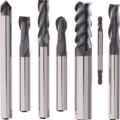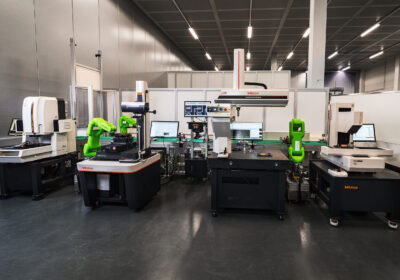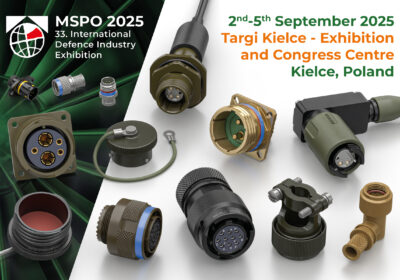~ Why integrated ASICs and ADCs are the premier solution ~
The continuous processing of signals from the real world is what makes smart sensors a success. It ensures that data is presented in a way that’s valuable to control systems, so they can determine the right actions to take and — ultimately — enhance performance. Here, Ross Turnbull, Director of Business Development and Product Engineering at custom IC design and supply specialist, Swindon Silicon Systems, explains why integrated mixed-signal solutions are crucial to industrial sensing systems.
Signal processing is a critical aspect of electronic systems, ensuring that signals are accurately converted to generate actionable insights. This process involves amplifying, filtering, converting and isolating signals to meet the needs of the subsequent stages of data processing.
Some signal processing and conditioning focuses on solely analogue or solely digital applications. Analogue signals from capacitive elements, magnetic heads and thermal sensing elements all require a low level of signal conditioning to filter the outputs and ensure any erroneous data is avoided.
The same goes for solely digital applications. Memory controllers, calibrators and threshold settings all need to process input signals through algorithms and compare them with reference data to ensure the signals are ready for next steps. But the real crux of signal conditioning is in mixed-signal applications.
Mixed-signal scenarios
Mixed-signal processing applications involve converting analogue signals into digital, or vice versa, to gain insights from the real world. One key component used in many of these applications is a high-resolution Analogue-to-Digital Converter (ADC), which plays a crucial role in maintaining signal integrity, transforming analogue signals into digital data with minimal loss.
In the automotive sector, signal conditioning enables the precise detection and processing of a wide range of analogue inputs, from engine sensors to tyre pressure monitoring systems (TPMS). This data is then processed in real-time to ensure optimal engine performance, fuel efficiency and provide warnings to drivers if certain vehicle metrics, like tyre pressure, fall below a predetermined threshold.
In industrial applications, signal conditioning is vital for monitoring and controlling various physical parameters in environments like manufacturing facilities, power stations and within automation systems. High-resolution ADCs digitise outputs from sensors measuring variables such as temperature, pressure, flow and vibration.
This digitised data is then processed to maintain optimal operating conditions, prevent equipment failures and improve efficiency. For example, in a manufacturing plant, precise signal conditioning allows for accurate monitoring of machinery, enabling predictive maintenance and reducing downtime.

ADCs explained
ADCs work by converting continuous signals into discrete signals for easier transmission and processing of information. This is done by sampling the input repeatedly over a given timeframe, balancing the time interval to keep the amount of data manageable while also minimising the information lost.
There are four key types of ADC: flash, pipeline, successive approximation register (SAR) and sigma-delta. Factors such as the resolution, speed, size, bandwidth or precision required are all considered when selecting an ADC type. For example, flash ADCs are large and consume a lot of power, but are extremely fast, making them ideal for applications that prioritise higher bandwidths.
Building a standard ADC means choosing from a limited set of commercial off-the-shelf parts. This can lead to a solution that may have some over-specified components just to achieve the minimum necessary performance in other areas, and an end product that takes up more space than is necessary. But in reality, there is a better solution — integrate the ADC into an application specific integrated circuit (ASIC).
![]()
An integrated solution
ASICs are integrated circuits that are tailored to meet specific functions within an application. Most often, this is within a smart sensor system, where changes in the analogue environment, like pressure, temperature or current, must be digitised through signal conditioning to be processed.
While an ASIC and ADC can exist separately, there are many benefits of integrating them onto a single chip. By integrating the ADCs onto the ASIC, the analogue and digital aspects of the design are combined into a single silicon die. This allows the system to become smaller and more mechanically robust, as well as eliminating the cost of the separate ADC component. This ultimately reduces cost by cutting down the time required to liaise between multiple manufacturers, as well as enhancing the validation process by allowing the entire package to be tested together.
Combining both analogue and digital functions onto a single chip also brings the process under one supplier. This ultimately reduces cost by cutting down the time required to liaise between multiple manufacturers, as well as enhancing the validation process by allowing the entire package to be tested together.
Swindon Silicon’s decades of experience has resulted in a vast array of relevant IP that can be used to provide the signal conditioning parameters that you require. Alongside this Swindon makes use of foundry IP and supplied IP, reducing development times while maximising performance.
In addition to these core components, once the ADC element is integrated, others can be too. Frequency generation elements like VCOs and PLLs, crucial for timing and synchronisation in signal processing, power management components such as DC/DC converters and voltage regulators, which ensure efficient operation under varying power conditions can be integrated along with the ASIC and ADC into a single package.
Signal conditioning is an essential aspect of modern electronic systems, enabling accurate and reliable data processing across various applications. ASICs, with their customised design and integration of high-performance components, play a pivotal role in enhancing the efficiency and functionality of signal conditioning processes to generate the most optimised solution possible.







